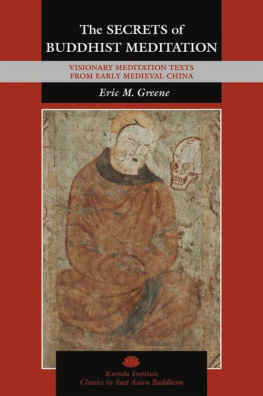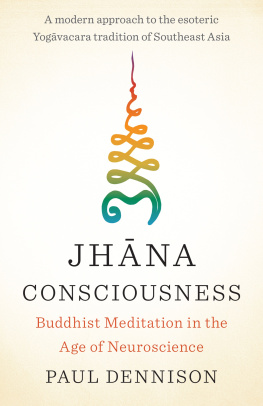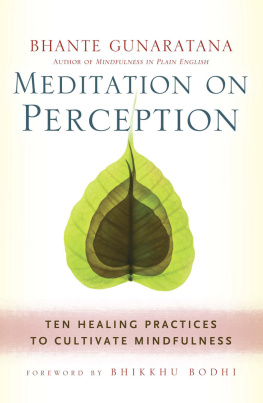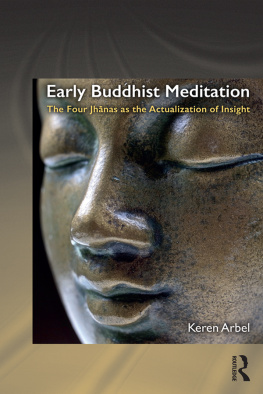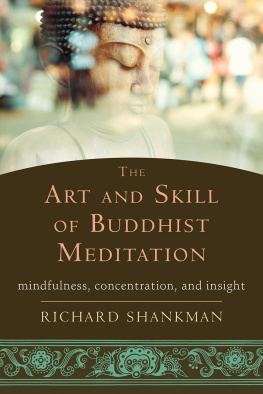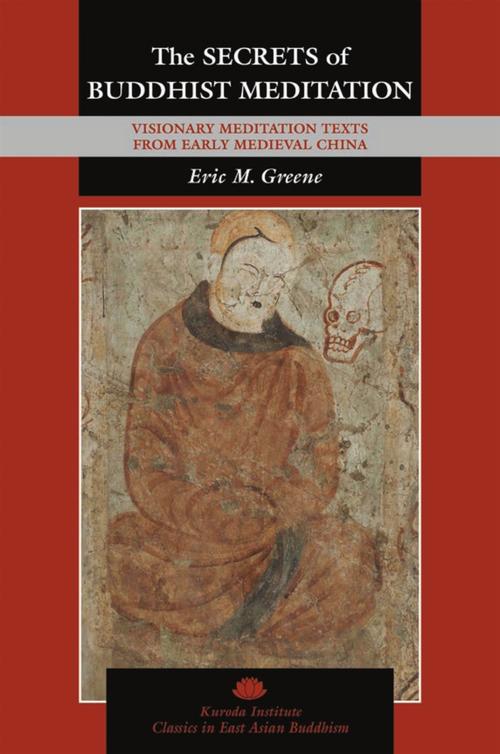ii
2021 Kuroda Institute
All rights reserved
Printed in the United States of America
26 25 24 23 22 21 6 5 4 3 2 1
Library of Congress Cataloging-in-Publication Data
Names: Greene, Eric M., author.
Title: The secrets of Buddhist meditation : visionary meditation texts from
early medieval China / Eric M. Greene.
Other titles: Chan mi yao fa jing. English. | Classics in East Asian
Buddhism.
Description: Honolulu : University of Hawaii Press, 2021. | Series:
Classics in East Asian Buddhism | Chiefly translations of Chan mi yao fa
jing (Chan essentials) and Zhi chan bing mi yao fa (Methods for curing).
| Includes bibliographical references and index.
Identifiers: LCCN 2020025389 | ISBN 9780824884444 (hardcover) | ISBN
9780824886868 (adobe pdf) | ISBN 9780824886844 (epub) | ISBN
9780824886851 (kindle edition)
Subjects: LCSH: MeditationBuddhism.
Classification: LCC BQ5612 .G74 2021 | DDC 294.3/44350951dc23
LC record available at https://lccn.loc.gov/2020025389
The Kuroda Institute for the Study of Buddhism is a nonprofit, educational corporation founded in 1976. One of its primary objectives is to promote scholarship on the historical, philosophical, and cultural ramifications of Buddhism. In association with the University of Hawaii Press, the Institute also publishes Studies in East Asian Buddhism. To complement these scholarly studies, the Institute also makes available in the present series reliable translations of some of the major classics of East Asian Buddhism.
University of Hawaii Press books are printed on acid-free paper and meet the guidelines for permanence and durability of the Council on Library Resources.
v
Kuroda Institute
Classics in East Asian Buddhism
The Record of Tung-Shan
William F. Powell
Tracing Back the Radiance: Chinuls Korean Way of Zen
Robert E. Buswell Jr.
The Great Calming and Contemplation: A Study and Annotated Translation of the First Chapter of Chih-is Mo-ho chih-kuan
Neal Donner and Daniel Stevenson
Inquiry into the Origin of Humanity: An Annotated Translation of Tsung-mis Yan jen lun with a Modern Commentary
Peter N. Gregory
Zen in Medieval Vietnam: A Study and Translation of the Thin Uyn Tp Anh
Cuong Tu Nguyen
Hnens Senchakush: Passages on the Selection of the Nembutsu in the Original Vow
Senchakush English Translation Project
The Origins of Buddhist Monastic Codes in China: An Annotated Translation and Study of the Changyuan qinggui
Yifa
The Scriptures of Wn Buddhism: A Translation of Wnbulgyo kyojn with Introduction
Bongkil Chung
Personal Salvation and Filial Piety: Two Precious Scroll Narratives of Guanyin and Her Acolytes
Wilt L. Idema
Signs from the Unseen Realm: Buddhist Miracle Tales from Early Medieval China
Robert Ford Campany
The Secrets of Buddhist Meditation: Visionary Meditation Texts from Early Medieval China
Eric M. Greene vi
vii
For my parents
viii
This book is a study and translation of two fifth-century Chinese Buddhist apocryphal sutrastexts written in the form of Indian Buddhist sutras translated into Chinese but in actuality composed or substantially compiled in Chinawhose central topic is Buddhist meditation, the seated, contemplative practice that in East Asia has most commonly been known as chan (zen in its Japanese pronunciation).
The wider historical context of these two texts, and others like them, I have discussed in detail in a companion volume called Chan Before Chan: Meditation, Repentance, and Visionary Experience in Chinese Buddhism (cited as Chan Before Chan in the notes). There I take up the rise of chan, in the early fifth century of the common era, as a widely practiced discipline in Chinese Buddhism; the growing prestige accorded to meditation masters (chanshi ) during this time; the development in China of a widespread culture of the kind of visionary meditation described in the contemplative literature of this era; and the way that seated meditation came to be, throughout the fifth, sixth, and seventh centuries, constitutively integrated into a broader cultic program in which repentance (chanhui ) was the guiding form and the destruction of sin the overarching goal. In Chan Before Chan, I also discuss the relationship and contrast between these earlier forms of Chinese chan and the approaches to it characteristic of the so-called Chan School, which arose during the late seventh century and whose distinctive teachings concerning meditation and Buddhism more broadly would prove so enduring in East Asia and, especially in various modernist incarnations of Japanese Zen, around the world today.
In contrast to Chan Before Chans wider historical and cultural tableau of Buddhist meditation in early medieval China, the present volume focuses on the content and textual histories of the two apocryphal sutras known as the Chan Essentials and Methods for Curing. It seeks to make these texts available to modern readers as artifacts of an approach to Buddhist meditation that, even though heretofore little studied or understood among scholars, was in fact the mainstream one for considerable periods of Chinese Buddhist history. Accordingly, Part I of this book provides a study of the structure xii and important themes of these two texts, as well as an analysis of their historical formation as apocryphal Chinese Buddhist scriptures, a process we are able to observe in their case at an unusual level of detail. Complete, annotated English translations are given in Part II.
As a project, the translation of an ancient Buddhist scripture whose main topic is meditation would have required little justification during much of the twentieth century. Today, the value of such an undertaking may be less clear. At least among scholars of religion, annotated translations or editions of primary texts as a product, and canonical scriptures and elite Buddhist topics such as meditation as a subject, have both lost much of their former cachet. This change in status reflects more broadly the reorientation of the humanities, over the past several generations of scholarship, away from an older, curatorial model in which the scholars main task was to preserve and transmit a canon whose value to the present was assumed. Although this is not the place for an extended analysis of such changing fashions, given that it can no longer be assumed out of hand it does seem appropriate to begin this book with at least a few general comments about what I take to be the value of the work of translation that occupies a large share of it.
Indeed, the lowered esteem often now accorded to lengthy translations of ancient texts, as a useful professional enterprise for a scholar of religion, arguably rests on a dubious distinction between translation as a purely descriptive task and the superiority of analysis. In calling this distinction dubious, my point is not merely that properly translating a premodern religious text requires real intellectual labor, though that is also true (Haberman and Nattier 1996). It is, rather, that the production of adequately annotated translations of new, previously unstudied documentsin the present case, texts about Buddhist meditation rather different in character from those familiar to modern scholarsinfluences the trajectory of a given field, over the long run, in a manner distinct from,

